Part III…The Sacred Valley
*This post originally appeared on the blog in early 2018…We have re-posted for the enjoyment of all during our ‘Summer re-runs” while Brian and Sylvia are in search of new adventures.

The Sacred Valley is loosely defined as the 60 miles or so of the Urubamba River between the Incan ruins at Pisac and the more famed ones at Machu Picchu to the east. Sometimes, it is known as the Yucay valley. The Urubamba is a major tributary of the Amazon, and its water eventually flows through Brazil and into the Atlantic ocean, well over a thousand miles away. Though the valley is less than a mile wide in most places, a series of terraces expand the cultivated area. In Incan times it was important for the growing of corn, as well as a major trade route linking the empire to the Amazon basin. Today, it remains an important agricultural zone, though its major cash crop is foreign tourist dollars.
Day two of our Inca adventure was spent depositing some of our own dollars in the fertile soil of this valley…and doing some much needed workouts to help acclimate for Salkantay.
First stop on the days itinerary was Pisac, a major Inca ruin (and a modern village of the same name which sits beside it.) Pisac, in its height, was probably either a fortress or the estate of Incan nobility, or maybe both. It was also a very large grain repository, and may have functioned as a sort of government crop laboratory. It’s terraces, still in use to this day, are staggering to behold.

The terraces have been maintained lately as a tourist and archealogical site…but that’s only happened in the last hundred years. The Spanish sacked Pisac a century before the Pilgrams set foot in America, and for most of that time it was left to itself…and it doesn’t at all look a ruin. It seems amazingly intact. And if the US government were to try to build something like it, it would probably take two years and a billion dollars of cost overruns.
The pictures above give some indication as to the scale of the freeway-sized terraces.
The Incas engineered it without computers and built it entirely with human muscle. It is things like this that make people start speculating about ancient aliens and the like, but in truth, there’s no need for such far-flung explanations. Those people are simply underestimating the capabilities of the Incas.
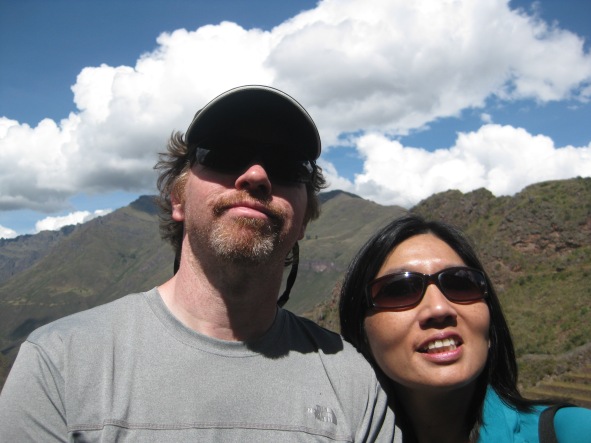
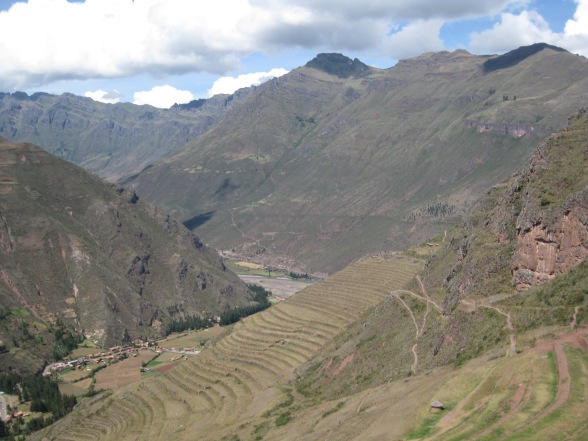
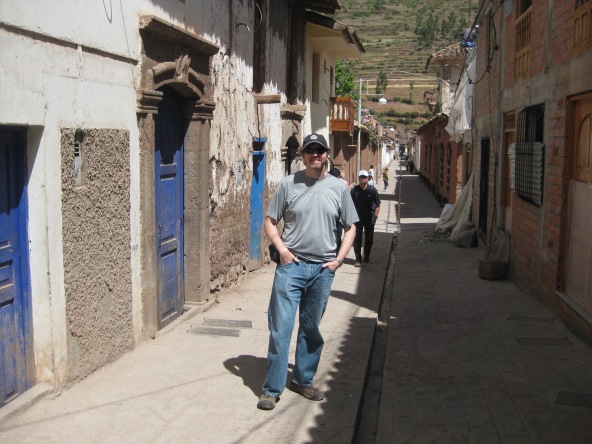
After Pisac, the tour group stopped in the modern town of the same name. Pisac town is somewhat infamous for being overrun with international tourists, and for being basically a giant gift shop, but is fascinating all the same. The village was built in 1570 by the Spanish Colonial government and the narrow streets probably incorporated some of the original Incan stonework, or at least copied it. Sylvia spent a short while haggling in the market and then it was back on the bus to the next major destination, which was…
Ollantaytambo
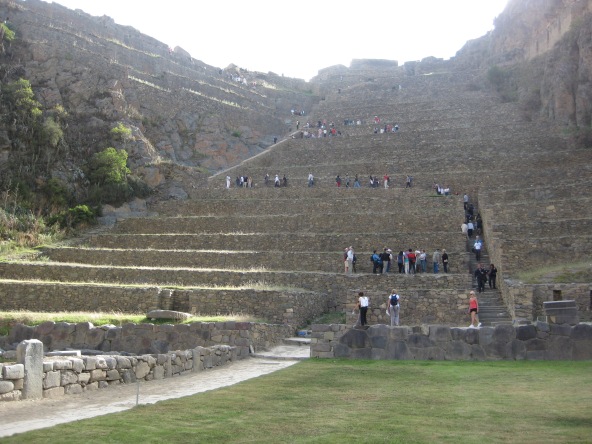
Probably the second most significant of the Incan Ruins, the massive fortress of Ollantaytambo guards the entrance to the Urubamba Valley and the gateway to the Inca Empire proper. (Machu Picchu is actually further down the valley, but that puts it basically out in the Incan hinterlands.) Here, the Incas under the Emperor Manco Inca successfully repelled an assault by the Spanish, marking the only time that an Incan army would defeat a Spanish force in the field. But the victory was short lived; the Spanish would accomplish by subterfuge and deceit what they failed to do with force of arms. Manco Inca would be assassinated, and the doomed Incan Empire, reeling from calamity after calamity, would fall.


With its high stone terraces frowning down right at the narrowest point of the valley, it is still an impressive place today. And like Pisac, shockingly intact for a 600 year old ruin. One can well imagine its terraces alive with Incan soldiers, raining stones down on their iron-clad Spanish opponents. It is no surprise that even the masters of war failed to take this place.
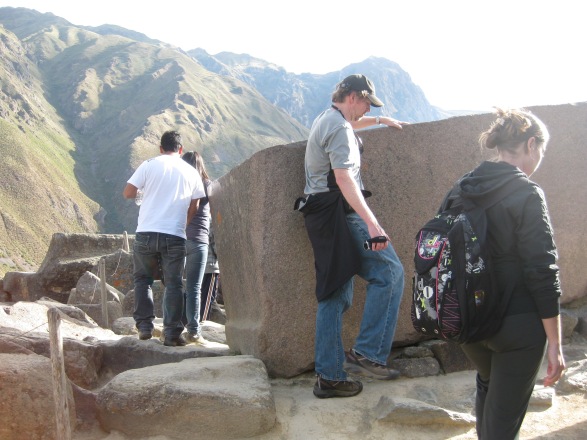
Here, we also saw an Incan stone that had been in the process of being quarried when the site was abandoned. Our guide told us that it been pulled (like almost all of them) from a local stone quarry four miles across the valley, across the river and up the opposite slope at least a thousand feet. He pointed it out to us, still quite visible as a mark on the hillside in the distance. It can barely be seen in the center of the below photo.
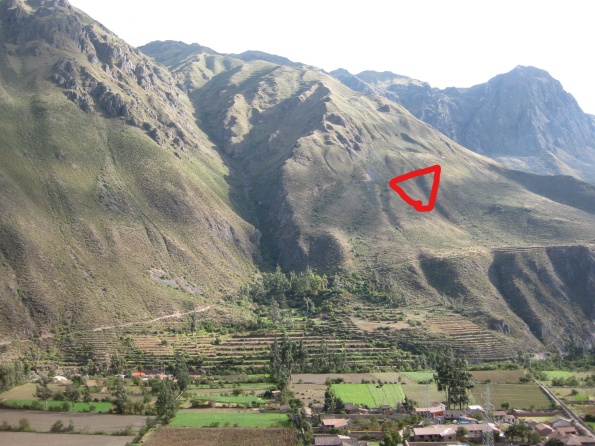
Recall that the Inca did this absent any machines, absent the use of the wheel (they only used wheels for decorations and toys, never in construction) and absent any beasts of burden apart from men (Llamas being too wimpy for stone hauling.)

Another interesting facet of Ollantaytambo is how its impressive location was incorporated into its construction, and the reverse. Note the position of the moon in the photograph below, and exactly how it appears to line up with…some sort of cosmic plan. Virtually everything the Incas did was performed in accordance to spiritual or celestial calculations.
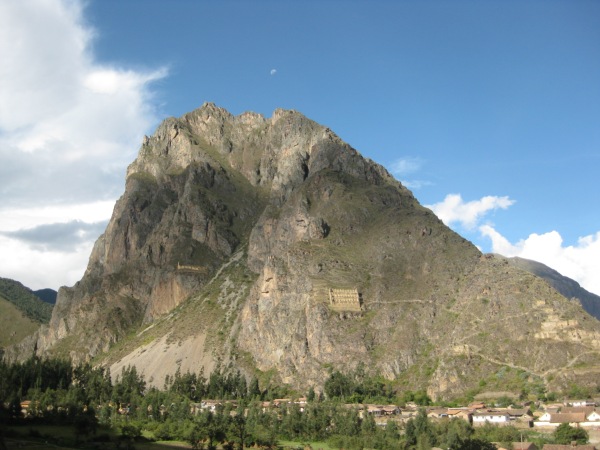
The village that adjoins, built upon the original Incan streets and foundations, is also notable as being the last stop of the narrow gauge PeruRail Train that links to Machu Picchu. Here, many days hence at the completion of our voyage, we would return.
And exit through the gift shop…
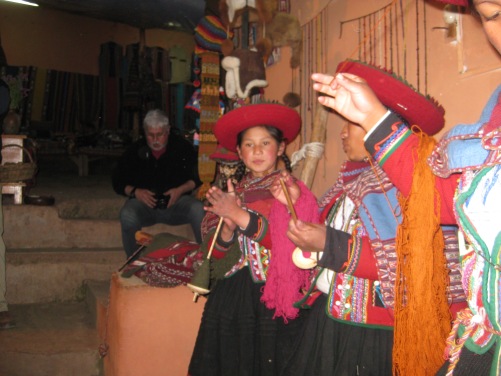
Once more stop to see some touristy stuff involving traditional wool spinning before it was back to Cusco and the hotel. The next morning a car would be coming for us early…to take us to the start of our Trek. It was finally time to begin the walk to Machu Picchu. For the next few nights, we had no real idea what our accommodations would be.
NEXT UP: Part IV…Where the Pavement Ends